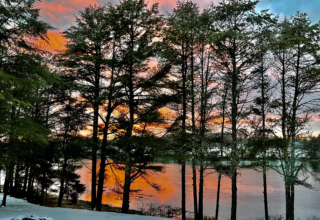
As Americans, we are sometimes envious of rich homo ludens saturated societies and try to emulate their traditions. In many instances, this attempt to resurrect and re-enact lost traditions is done on behalf of those who come from the culture that once offered this ceremony. One of us, for instance, chaired a dissertation committee with a doctoral student who focused on the ceremony-based mentoring of young African American women in their own African tradition. A similar program has been established throughout the United States for African American males, who often don’t have a strong male parenting figure in their life. One of our Sage leaders describes his work with the local Maidu tribe in California. He assists them with their “calling back the salmon” ceremony. Sadly, it is often someone from outside a “dying” culture (an anthropologist or folklorist) who is teaching the lost ceremony to the indigenous people—the irony of “postmodern life” (Anderson, 1995)
In these examples of mature fraternal life and the abundance of ritual and ceremony in societies throughout the world, we find that Generativity Three thrives and is often coupled with one or more of the other generativity roles.
Preserving
This second kind of Generativity Three enactment is about keeping something in its original state. In many instances, the act is based on a sense of home and the wish to “stay at the same home where I grew up.” As one of our Sage leaders noted: “I grew-up here and have roots and family history here. I have a lot of passion about the future of this community.” The generative motivation for these preservationist men and women is obvious and understandable. They don’t want anything to change. Such a motive certainly can lead us to generativity. It can also lead to stagnation, with a sense that all change is bad and that one’s purpose in life is to resist all attempts to alter what now exists. The challenge for the preservationist with strong roots is to preserve the past while also preparing for the future. The Sage leader we just quoted indicated that he is just as passionate about the future of his community as he is about preserving his roots.
There are several ways this generative bridging between the past and future can occur. We see it taking place when the Generative members of a community seek first to identify the values and practices of the community that are worth fighting for and preserving, and then replace other values and practices that are outmoded. It is the process of discernment that we identified in a previous essay in this series. We needn’t keep something because it has been around for a long time; conversely, we shouldn’t discard something without identifying the alternative to replace it that is better and is fully aligned with the values and practices we want to preserve.
In recent years, we have found both types of failure in governments throughout the world. Societies hold on to the old simply because “it has always been the way we do things” or is prescribed in sacred texts. Alternatively, societies overthrow a long-standing government without any idea what to replace it with. Fidel Castro candidly noted many years ago, after defeating the Batista government in Cuba and walking into the presidential palace, that he had been concentrating on the defeat of Batista and didn’t really have any idea about what should replace that repressive regime (Sarason, 1972).
A second way in which the preservationist bridge can be built between the past and future has to do with what we have identified as the establishment of sanctuaries—areas with boundaries in which the old is preserved while the new can flourish all around it. We are not referring to the faux-sanctuaries of yesterday-ville in places like Disneyland, Disneyworld, and Knotts Berry Farm. Rather, we are pointing to places like the French Quarter in New Orleans or the inner city of Tallinn, Estonia (one of the original Hanseatic League cities in Europe). These are preserved sectors within cities that are otherwise modern. Sustained through the use of strictly enforced building codes and often highly priced real estate within the preserved sectors, these sanctuaries attract tourists and enable fortunate inhabitants to have a life that is embedded in both the old and new—what is now often called a “postmodern” way of living.

















